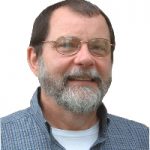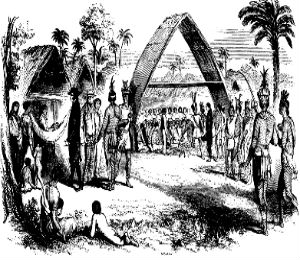 When Columbus landed in the Bahamas in 1492 – after sailing the ocean blue – there were some 3,000 native Indian groups living in the Americas.
When Columbus landed in the Bahamas in 1492 – after sailing the ocean blue – there were some 3,000 native Indian groups living in the Americas.
But the only Indians that Columbus himself saw were the Tainos of the Caribbean – including the Bahamian Lucayans – a society that the Europeans completely destroyed.
Although Columbus and his brothers were men of their times, the extinction of Taino societies really began in 1502, under the direction of Nicolas de Ovando, who subjugated the Indians with great brutality.
Within two decades they ceased to exist as a separate population due to forced labour, warfare, disease, emigration and outmarriage.
And the whole regional culture officially expired in 1797, when the British deported the last independent group of Indians from St Vincent to Central America.
So a description of the pre-Columbian peoples of the Caribbean has to rely on written accounts from the contact period together with archaeological evidence and linguistic analysis.
One of the big questions is their origin – where did these people come from and how did they migrate through the islands prior to European contact?
Well, you will be pleased to know that a new book by arch linguist Dr Julian Granberry (in conjunction with the late archaeologist Gary Vescelius) “synthesizes evidence that has…never before been correlated and critically examined.”
(Languages of the Pre-Columbian Antilles was published late last year by the University of Alabama Press. It is available now in Nassau bookstores).
Dr Granberry wrote one of the first surveys of Bahamian archaeology in 1955 for his master’s thesis at the University of Florida, and has a resume a mile long, most of it dealing with extinct languages. As a Florida native, he has been a frequent visitor to the Bahamas.
In the 1980s he trained and helped guide the activities of the Bahamas Archaeology Team, in which this writer was involved. The BATS, as they were known, undertook several useful investigations before disbanding a few years later.
In addition to surveying a now-demolished loyalist plantation at Gambier (a report on which can be found in the February, 1998 edition of the Bahamas Journal of Science – see www.bahamasmedia,com), the BATS made the first recorded discoveries of Lucayan settlement on New Providence and found possible evidence of a pre-Lucayan presence on the southeastern tip of Paradise Island.
The Taino culture (of which the Lucayans were a part) developed in the West Indies, as their own mythology claimed. But scientists have traced their ancestral cultures back to the Orinoco River valley in South America, and their ancestral languages back to the centre of the Amazon basin.
They were an offshoot of the Arawak tribes that migrated down the Orinoco from the central Amazon and entered the Caribbean about 500 BC.
In his book Dr Granberry notes that in pre-Columbian times, Arawakan languages were spoken from the northern Bahamas all the way to Bolivia, and from the Guianas to the foothills of the Peruvian Andes.
But he also applies his linguistic expertise to the region’s more distant past. Before the Tainos, parts of the Caribbean had been settled by stone-age tribes from both Central and South America.
“At some time prior to 3,000 BC a Tolan-speaking people from the Belize-Honduras coastal region discovered and settled the then-uninhabited Greater Antilles,” he wrote.
“Around 1,000 BC a Waroid-speaking people from the northern Venezuelan coast was present in the Greater Antilles…the hypothesis postulates a movement from (Venezuela) to the Greater Antilles through the natural land bridge of the Lesser Antilles.”
Linguistic evidence suggests that the Tolan speakers were pushed into an isolated pocket of Hispaniola where they became known as the Ciguayo. And the Waroid population was pushed to the western tip of Cuba by the Tainos and became known as the Guanahatabey. Both remnants survived into historical times.
A few decades before Columbus arrived, another Indian group called the Caribs began expanding into the Lesser Antilles from the Guianas, a territory which they shared with the Arawaks. They apparently arrived in small war parties and merged with the existing population. But this is the group for whom the entire region is named.
These people were encountered by Columbus in Guadeloupe on his second voyage in 1493. More warlike than the Taino, they used parts of human bodies in rituals, giving rise to the belief that they were cannibals.
The last speaker of the Island Carib language died on Dominica about 1920, Dr Granberry says. On St Vincent, the Indians became known as Black Caribs by intermarrying with Africans, and were eventually removed to British Honduras. Today there are almost 75,000 speakers of the Carib’s Arawak creole in Belize.
For an indication of the complexity of this subject, here is Dr Granberry’s description of how the book came to be published: “The authors began, independently of each other, to examine both the surviving Taino…and non-Taino…lexicons and the native place-names of the Antilles.
“Vescelius in particular devoted an extraordinary amount of time and research over a period of many years to these endeavours, and the bulk of the work reported in this volume on that topic is attributable to his rigorous long-term study.
“In the late 1970s we began to consolidate our research efforts and, after Vescelius’ untimely death some years later, when most of his linguistic and toponomic notes were turned over to Granberry, the final process of completing our joint venture was begun, resulting in this volume.
Most scholars believe the Bahamian archipelago was uninhabited before the arrival of the Tainos. The Indians Columbus met here are known archaeologically as the Palmetto people (a reference to their locally-made style of pottery) and ethnohistorically as Lucayan Tainos (luk-ku cairi means ‘island people’).
Scientists say that Taino Indians from both northwestern Hispaniola and northeastern Cuba moved into the southern Bahamas about the 7th century AD and became the Lucayans. They appear to have settled the entire archipelago by the 12th century AD.
In reconstructing the extinct Taino language (tai-no, by the way, means ‘good people’), Dr Granberry presents linguistic evidence for several interesting suggestions. For example, listing the 39 surviving aboriginal island names in the Lucayan archipelago he points out that ‘in-na-wa’ (or Inagua) meant ‘small eastern land’, implying that it was settled from Cuba and not Hispaniola.
The word ‘ba-ha-ma’ (the Lucayan name for Grand Bahama) meant ‘large upper middle land’. So our national name is apparently not a derivation from the Spanish for ‘shallow sea’ as most believe. Granberry uses these island names to trace the movement of the Lucayans through the archipelago.
For students of the European conquest of the West Indies after 1492, it is interesting to note that the region’s first re-peopling was undertaken by the Taino Indians themselves – who almost totally exterminated the original inhabitants.
But the Spanish intervention was far swifter. The entire surviving population of the Bahamas, for example, (about 40,000 people) was shipped to Hispaniola between 1509 and 1511. And our archipelago remained uninhabited until the coming of the Eleutherian Adventurers in the mid-17th century.
During the 1500s as many as 40 per cent of the Spanish colonists took Indian wives. And by 1540 Africans had almost completely replaced the Indians as slaves, eventually giving rise to the mixed societies of most Caribbean nations today. This article was first published in The Tribune Wednesday, March 16, 2005.
The column ‘Tough Call’ by Larry Smith is published in The Tribune every Wednesday and is reprinted here as a courtesy. Mr. Smith founded and successfully grew an advertising agency over 20 years. Under his direction Media Enterprises diversified into short-run commercial printing and publishing, and is now the largest non-fiction book wholesaler in the Bahamas. He has 30 years experience as a journalist and publicist and has contributed numerous articles and columns to the Bahamian press. A former reporter at the Nassau Guardian, local correspondent for Reuters and editor at the Bahamas News Bureau, he conceived and edited the Bahama Almanac (published 2000 by Media Enterprises), wrote the commentary for Mike Toogood’s Portrait of an Archipelago (published 2004 by Macmillan Caribbean), and edited the Bahamas Environmental Handbook (published 2002 by the government). In 2003 he took a year’s leave of absence from Media Enterprises to lead a transition management team at the Nassau Guardian after the paper was acquired by local investors. After leaving the Guardian he was contracted by the Tribune as online manager/editor and columnist. He has a degree in political science and journalism from the University of Miami.


